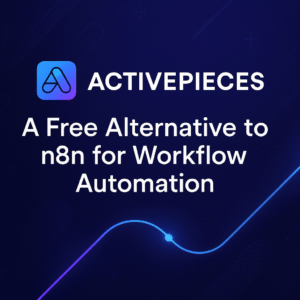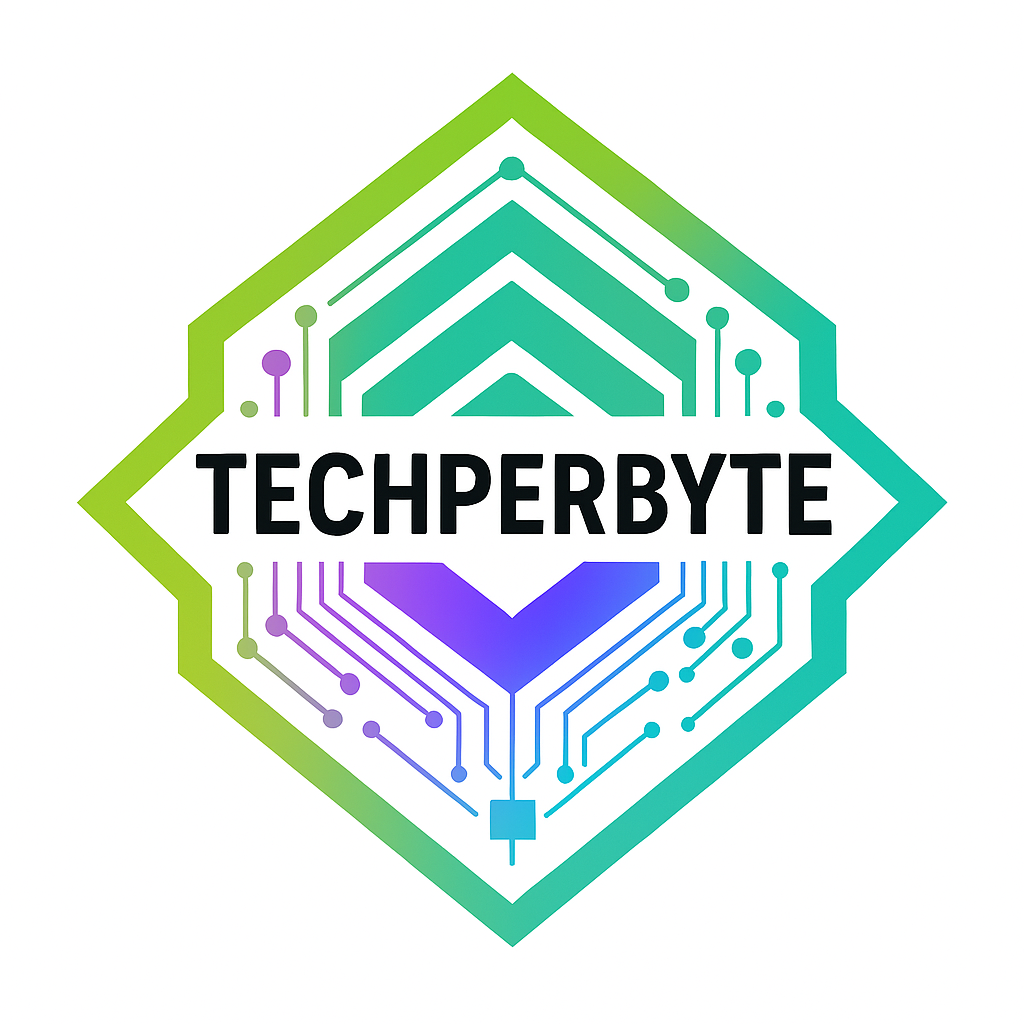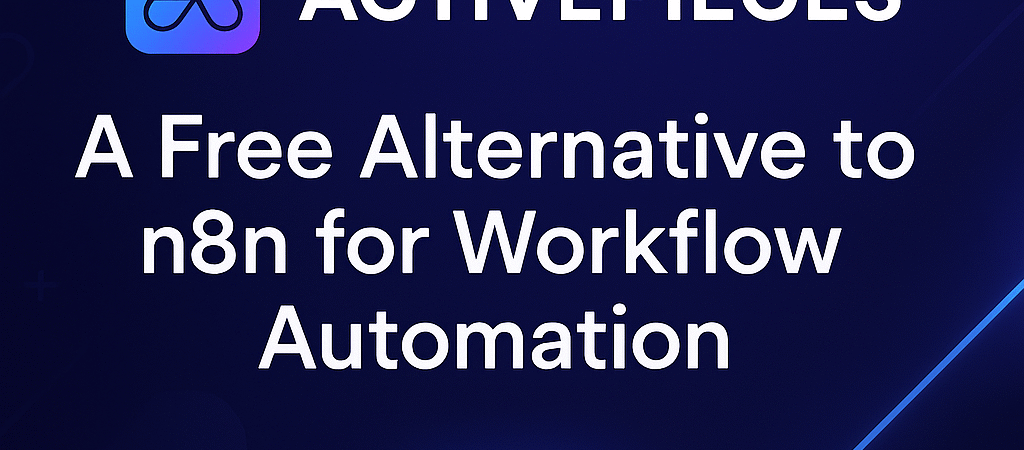Introduction to Workflow Automation Tools
Workflow automation tools have emerged as essential resources for both individuals and businesses looking to optimize their operational processes. By automating repetitive tasks, these tools significantly reduce the time and effort required in executing workflows, thereby enhancing productivity. The central premise of workflow automation lies in its ability to streamline complex processes, allowing users to focus on more strategic initiatives rather than mundane activities.
The significance of these tools cannot be overstated; they foster efficiency by minimizing human error and ensuring consistency in task completion. Furthermore, they facilitate better collaboration among team members, as automated workflows can encompass various applications and systems, creating an integrated working environment. As a result, organizations can achieve higher levels of output and satisfaction, both internally and externally.
Despite the clear advantages of workflow automation tools, a considerable number of potential users often express reservations about the costs associated with commercial solutions. Consequently, many seek free or open-source alternatives that can provide similar functionalities without imposing significant financial burdens. Budget constraints are a primary motivation for this search, particularly for small businesses and individual entrepreneurs who may not have access to ample resources.
In addition to financial considerations, the desire for flexibility also drives the preference for free tools. Open-source solutions allow users to customize workflows to suit their specific needs, giving them greater control over their processes. Moreover, the community-driven support associated with free alternatives fosters a collaborative environment where users can share insights, troubleshoot issues, and collectively enhance the tool’s functionalities.
In summary, workflow automation tools act as catalysts for productivity enhancement while addressing common challenges faced by businesses and individuals. The pursuit of free or open-source alternatives highlights essential factors such as budgetary limitations, the need for customization, and the benefits of communal support within the automation landscape.

Activepieces vs n8n: A Quick Comparison
When assessing workflow automation tools, two prominent options are Activepieces and n8n. Both platforms present unique features that cater to different user needs and preferences. This comparison will delve into key aspects such as features, pricing models, ease of use, and available integrations to illuminate the strengths and weaknesses of each tool.
In terms of features, Activepieces offers a user-friendly interface that simplifies automation processes, making it accessible for beginners. Its flexible workflow design allows for quick setups and customizations, enabling users to create tailored automation solutions. On the other hand, n8n is often lauded for its extensive functionality, featuring a range of advanced options for more technically inclined users. While Activepieces focuses on straightforward automation, n8n provides deeper customization and a broader array of nodes for complex workflows.
Pricing models also differ significantly between the two. Activepieces stands out by offering a completely free model, making it an attractive choice for startups and individual users looking to optimize their processes without incurring costs. In contrast, n8n presents a tiered pricing structure that includes a free version but charges for premium features, which could limit access for small-scale users. This disparity in cost can impact user adoption, particularly among budget-conscious organizations.
Regarding ease of use, Activepieces excels with its intuitive design, allowing users with varying technical expertise to automate workflows effortlessly. Conversely, n8n, while powerful, may pose a steeper learning curve for new users due to its comprehensive feature set and configuration requirements. Therefore, individuals and businesses should consider their technical capabilities and project demands when selecting between the two platforms.
Lastly, both tools offer a range of integrations, enabling users to connect with various applications seamlessly. However, the selection and ease of implementation may vary between them, influencing user experiences based on their existing technology stacks.
Key Benefits of Activepieces
Activepieces presents a host of advantages as a workflow automation tool, making it a significant player in the automation landscape. Firstly, its free plan offers users immediate access to a comprehensive suite of automation features without the burden of financial commitment. This accessibility democratizes workflow automation, allowing individuals and small businesses to benefit from advanced automation capabilities typically reserved for costlier platforms.
Another salient feature of Activepieces is its open-source nature. Users are empowered to customize the tool according to their specific needs, further enhancing its utility in various contexts. By allowing modification of the source code, developers and tech-savvy individuals can create tailored solutions that better fit their workflow requirements. This level of customization facilitates innovative applications that cater to unique business scenarios.
Community support stands out as a cornerstone of Activepieces. A robust and engaging community encourages collaboration among users, resulting in a wealth of shared knowledge, tutorials, and problem-solving experiences. This invaluable support network not only helps users navigate challenges but also fosters a spirit of innovation as users share their custom integrations and automation recipes.
Furthermore, the user-friendly interface of Activepieces simplifies the process of setting up and managing automation workflows. Users, regardless of their technical expertise, can easily grasp its functionality, which lowers the barrier to entry for those new to workflow automation. This intuitive design reduces the learning curve and allows for smooth adoption within teams and organizations.
Lastly, Activepieces offers various deployment options, catering to diverse user preferences. Whether deployed on-premises or in the cloud, users can choose the environment that best suits their organizational infrastructure. This flexibility enhances adaptability in different operational contexts, ensuring that Activepieces can meet the evolving needs of its diverse user base. Overall, these key benefits make Activepieces a compelling choice for those seeking effective workflow automation solutions.
Real-World Use Cases for Activepieces
Activepieces provides a versatile platform for workflow automation, making it an attractive alternative to n8n in various industries. One prominent use case is in marketing automation. Businesses can utilize Activepieces to streamline their marketing campaigns by automating email sequences based on user interactions. For example, when a user subscribes to a newsletter, Activepieces can trigger a series of personalized emails, reducing manual effort and improving customer engagement.
Integrating with tools like Google Sheets and Gmail presents another practical scenario. For organizations that rely on data management, Activepieces allows teams to automate the transfer of information between Google Sheets and email accounts. This can be particularly useful for sending updates to teams or stakeholders whenever new data is entered into a spreadsheet. By reducing the need for repetitive tasks, companies can allocate resources more effectively and ensure timely communications.
Moreover, Activepieces excels in automating communications through platforms like Slack and Discord. Businesses often need to send reminders, alerts, or updates across their team channels. With Activepieces, users can create workflows that automatically post messages based on predefined triggers, such as upcoming deadlines or project statuses. This functionality not only enhances team collaboration but also minimizes the risk of missed communications.
In the realm of project management, integrating Activepieces with tools like Trello or Asana can greatly enhance productivity. For instance, teams can set up workflows that automatically create tasks in project management tools when specific criteria are met, such as a form submission or a new client onboarding. This seamless integration ensures that team members are always informed about their responsibilities and deadlines, facilitating a smoother workflow.
These real-world scenarios illustrate the practical applications of Activepieces across various sectors. By addressing common challenges in automation, Activepieces proves to be a powerful tool for enhancing efficiency and productivity in daily operations.
Pros and Cons of Activepieces vs n8n
When comparing Activepieces and n8n as workflow automation tools, it is important to consider both the advantages and disadvantages of each. This will help potential users choose the right solution tailored to their requirements.
Starting with Activepieces, one of its primary advantages is its user-friendly interface, which simplifies the setup of automation workflows. This makes it accessible for users with varying levels of technical expertise. Furthermore, Activepieces is a free tool, allowing users to explore its features without incurring costs. Another notable feature is its ability to integrate easily with popular applications, enhancing its utility in diverse environments. Scalability is another plus for Activepieces; it can accommodate both small and medium-sized projects without requiring extensive resources.
However, Activepieces does have its limitations. The platform may lack certain advanced features that experienced users might expect from a more mature tool. Additionally, the community support surrounding Activepieces is still developing, resulting in a smaller pool of resources and documentation compared to its competitors.
On the other hand, n8n boasts a robust set of features, including extensive integrations and flexibility for complex workflows. Its open-source nature allows for customizability, enabling users to modify the tool as they see fit. n8n’s active community offers substantial support, providing users with a wealth of tutorials and shared workflows, facilitating troubleshooting and learning.
However, n8n is not without drawbacks. Its interface can be overwhelming for beginners, possibly leading to a steeper learning curve. Additionally, while there is a self-hosting option, managing the software requires more technical knowledge and infrastructure, which might deter some users.
In summary, both Activepieces and n8n present unique advantages and limitations. The choice between the two largely depends on the user’s specific needs, such as technical skill level, desired features, and the type of projects they aim to automate.
Step-by-Step Guide: Creating a Workflow in Activepieces
Creating a workflow in Activepieces is a straightforward process that empowers users to automate tasks seamlessly. This step-by-step guide will walk you through setting up a basic workflow, illustrating how accessible and user-friendly the Activepieces platform is.
To begin, sign in to your Activepieces account. If you do not have an account yet, registration is quick and free. Once logged in, you will be taken to the dashboard. To initiate the creation of a workflow, click on the “Create Workflow” button prominently displayed on the page.
Once you are on the workflow creation screen, you will be prompted to name your workflow. Choose a descriptive name that reflects the purpose of your automation. This will help you identify the workflow easily later on. After naming, click on “Add Trigger.” Triggers are crucial in determining when the workflow should commence; for instance, you can select “New Email Received” as a trigger if you want to automate actions based on incoming emails.
After selecting a trigger, you will need to set up actions that you wish to automate. Click on “Add Action,” and a menu will appear, presenting various options such as “Send Notification,” “Create Task,” or “Update Database.” Choose an action that fits your workflow needs. Configure the action parameters according to your requirements. For instance, if your action is sending notifications, you will need to set the message and recipient’s details.
As you add each trigger and action, Activepieces allows for the incorporation of filters and conditions. These features enhance the workflow’s precision and efficiency. Once your components are in place, review your settings for accuracy. When satisfied, click “Activate Workflow” to finalize the automation process.
By following these steps, you can create an effective workflow in Activepieces without any technical expertise. The platform’s intuitive interface and versatile functionality make automation accessible to everyone, allowing for increased productivity and streamlined processes.
Challenges and Limitations of Activepieces
While Activepieces presents an attractive option for users seeking a free alternative to n8n for workflow automation, it is essential to recognize the potential challenges and limitations that may arise during its usage. Understanding these constraints can help users make informed decisions based on their specific needs and requirements.
One characteristic that stands out is the user experience associated with the platform. While Activepieces aims to provide an intuitive interface, some users report encountering hiccups that can hinder their ability to effectively create and manage workflows. This includes difficulties in navigating the platform, a lack of robust documentation, and a learning curve that may be steeper than anticipated for new users. In contrast, n8n has developed a more established community and a wider range of tutorials that may facilitate the onboarding process.
Another consideration is the resource requirements tied to using Activepieces. While the platform is designed to be lightweight, users with limited computing resources may experience performance issues, especially as workflows become more complex. This aspect is notable for smaller organizations or individual users who may rely on lower-end hardware or cloud resources. As workflows grow in intricacy and scale, the limitations in resource management can significantly affect the user experience.
Additionally, comparing the feature set of Activepieces to n8n reveals potential gaps that could impact users seeking advanced automation capabilities. While Activepieces covers many essential automation features, it may lack some advanced tools and integrations available in n8n, which could hinder users with specific use cases or needs for sophisticated automation processes. This limitation might drive users to reconsider their choice when evaluating both platforms.
In conclusion, while Activepieces offers valuable benefits, users should be mindful of these challenges and limitations when determining its suitability for their workflow automation needs.
User Feedback and Community Experience
Activepieces has garnered considerable attention as a viable free alternative to n8n, particularly due to its focus on user experience and community involvement. Many users have taken to various forums and discussion platforms to share their hands-on experiences with Activepieces. These testimonials highlight both the strengths and areas for improvement within the software.
A recurring theme in user feedback is the ease of use. Many users, particularly those without extensive technical knowledge, have found Activepieces to be intuitive and user-friendly. One community member noted, “I was able to set up my first workflow within minutes, which was a pleasant surprise.” This simplicity makes it an attractive option for small businesses and individuals seeking efficient workflow automation without the steep learning curve often associated with more complex tools like n8n.
Moreover, Activepieces has received praise for its responsive community support. Users often report finding quick help through forums and social media groups dedicated to the platform. Comments such as, “The community is incredibly helpful; I received answers to my questions almost immediately,” reflect the collaborative spirit that drives user engagement. This supportive environment fosters a sense of belonging, making it easier for users to share tips and best practices, thus enhancing their automation experiences.
Additionally, while many users express satisfaction with the features available in Activepieces, some highlight areas that could benefit from further development, such as integration with certain third-party applications. However, constructive criticism often leads to feature requests, which the development team actively considers. This ongoing dialogue between users and developers exemplifies the platform’s commitment to continuous improvement and adaptation based on actual user needs.
In essence, user feedback from the Activepieces community paints a positive picture of the platform’s usability, support, and overall performance in real-world applications. This feedback is instrumental in understanding its potential as a robust option for those considering workflow automation tools.
Conclusion: Who Should Choose Activepieces?
Activepieces emerges as a compelling option for individuals and organizations seeking a cost-effective alternative to n8n for workflow automation. Its open-source nature, combined with user-friendly features, caters particularly well to a diverse audience, including freelancers and small businesses. For those who value flexibility and customization, especially in a rapidly changing digital landscape, the adaptability of Activepieces makes it an appealing choice.
Freelancers, who often juggle multiple projects and clients, can benefit greatly from Activepieces’ streamlined automation capabilities. This platform allows them to optimize their workflows without financial burden, which is crucial for individuals operating on limited budgets.
Moreover, tech-savvy users who appreciate open-source solutions will find that Activepieces offers rich customization and a robust community support system. The straightforward integration capabilities further amplify its appeal, enabling seamless connection with various applications and services.
Activepieces is ideal for organizations prioritizing data privacy and control over automation workflows, without third-party dependencies.
Unlike n8n, which adds costs and complexities, Activepieces offers a simpler yet powerful automation solution.
Freelancers, small businesses, and tech enthusiasts seeking open-source tools will find Activepieces suits their workflow needs.
If you belong to these groups, adopting Activepieces can enhance efficiency and optimize workflow management effectively.
The recommendation is clear: consider Activepieces to streamline operations and increase productivity with straightforward automation.

